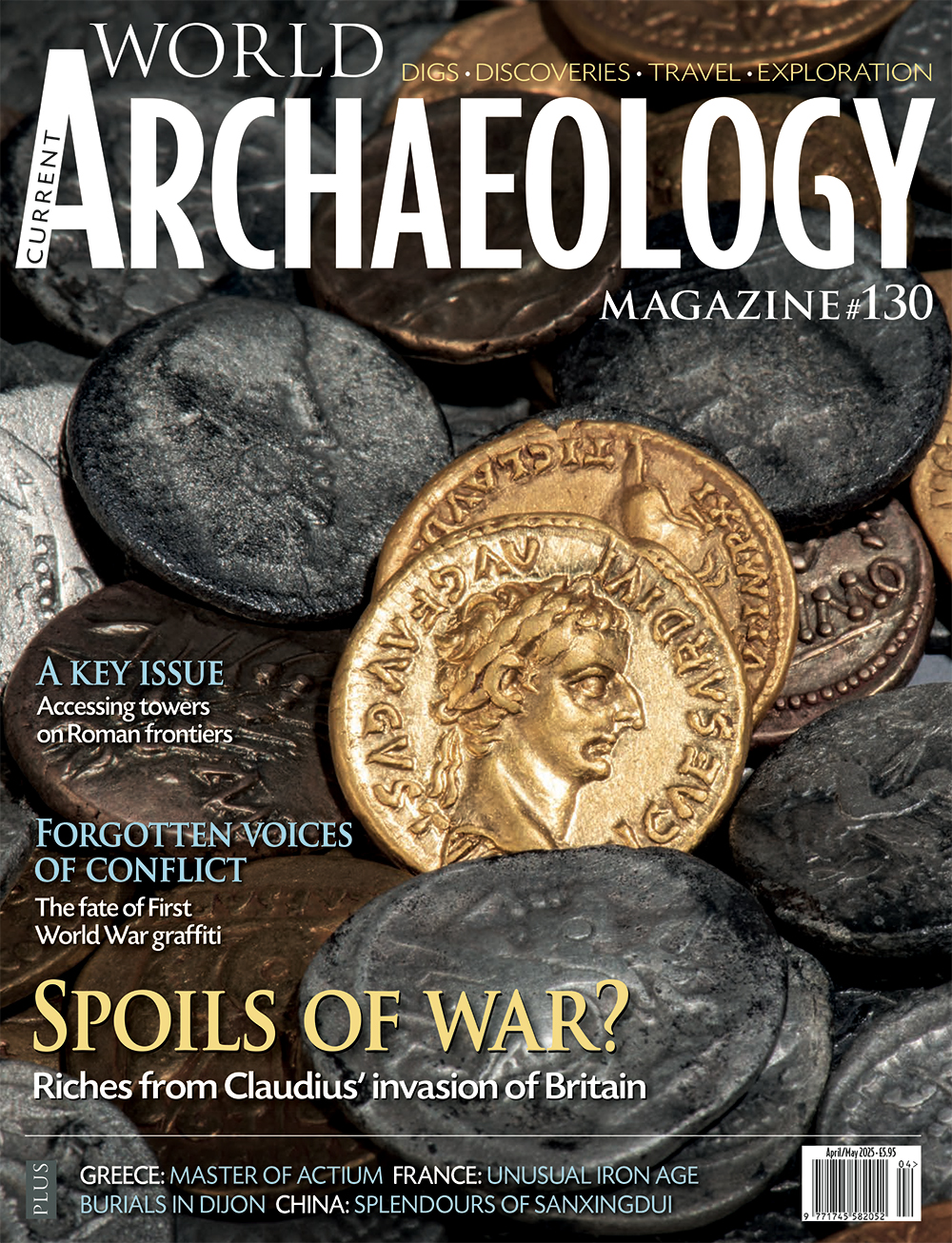A hoard discovered in the Netherlands presents an extraordinary first for continental Europe. The contents of this cache combine coins minted by Rome and a powerful ruler in Britain: Cunobelin. This eye-catching mixture is just one of the clues that the hoard was amassed by a person or people with first-hand experience of Britain, most likely participants in the Roman invasion. Do these coins of Cunobelin, then, represent the spoils of war? In our cover feature, we explore what this hoard reveals about a major historical moment.
Relics of conflict are also apparent deep underground in France. There, former quarries were repurposed for military use during the First World War, with their rock faces providing a canvas for graffiti. Today, these marks range from pencilled names and national icons to expressions of hell, creating a corpus of forgotten voices from the conflict.
In Dijon, it is Iron Age bodies being carefully seated in pits that seem to make a statement. Excavations have revealed 13 examples of these burials, which can be added to the 50 or so known from the era. None of them have been found in formal cemeteries, while their enigmatic arrangement evokes a posture found in contemporary sculpture that seems to represent important figures.
On the Roman frontiers, it is the design of towers that has been attracting scrutiny. In particular, the placement of doorways poses questions about how easy the structures were to access, and what this implies about the wider role of these barrier systems.
Meanwhile, artefacts that have been recovered after illicitly crossing modern borders have occasioned a study into what trafficked goods can tell us. A set of Iranian swords reveals the extent to which ancient objects can be cynically modified to make them more appealing to modern audiences.
Finally, in our travel section Richard Hodges introduces us to the site of Nicopolis, in Greece, and talks to it s eminent excavator Kostas Zachos.

